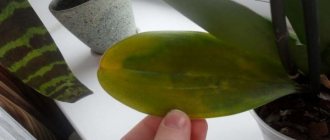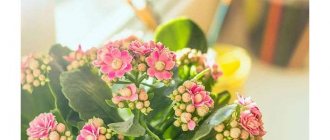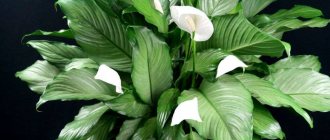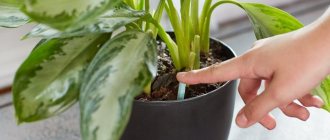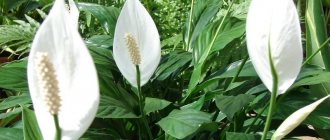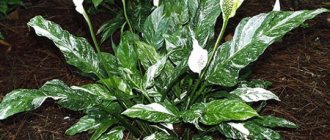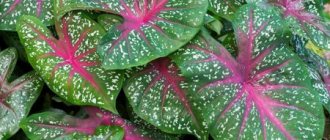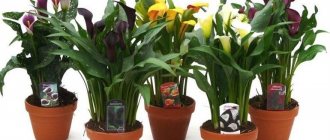Houseplants decorate any room, delight their owner with their blooming appearance, but are by no means immune from troubles. Incorrect lighting, attack by pests, temperature fluctuations, operation of a fan, air conditioner or drafts, excessive and insufficient watering, and other maintenance errors can spoil the appearance of green pets or cause their death. Therefore, it is important for a florist to notice in a timely manner that a flower is not doing well, to be able to revive it in a way appropriate to the situation, and then to take preventive measures that will reliably protect the pet from troubles in the future.
The plant is weakened after winter
During wintering, the flower is affected by several unfavorable factors at once. This includes too low air humidity, heat emanating from heating devices, cold flows from the window, and lack of sunlight.
Often plants stop growing and wither, their leaves change color, dry out at the tips or curl
To bring a weakened indoor flower back to life, you can use two methods.
Spraying with hydrogen peroxide
A 3% hydrogen peroxide solution is optimal for the procedure. It can be purchased at any pharmacy.
What do we have to do:
- Fill a container with 1 liter of tap water and let the liquid sit for 2 days. During this time, it will get rid of chlorine and reach room temperature.
- Add 2 tbsp to the water. l 3% hydrogen peroxide, stir the solution.
- Pour the working fluid into a plastic spray bottle.
- Place the flower pot in the bath, spray the plant and soil generously.
Repeat treatment daily for 2 weeks. Thanks to it, indoor plants will receive an impetus for development, and flowering species will later delight with abundant flowering.
Spraying with aspirin solution
For treatment you will only need one tablet of this drug.
How to refresh a flower with aspirin:
- Crush 1 tablet into powder.
- Mix the medicine with 3 tbsp. l slightly warm water, stir.
- Add aspirin solution to 1 liter of settled water.
- Pour the working fluid into a plastic spray bottle.
- Spray the flower from all sides.
- Pour the remaining liquid over your pet.
The temperature of the settled water must correspond to the care requirements of a particular species. Some cultures are given a cool shower, others – at room temperature, and others – 25-30°C.
The drug will help increase the immunity level of flowers. Its plant solution can be used to treat plants with the onset of spring and in winter to compensate for the excessive dryness of the indoor atmosphere.
Prevention
In order for green pets to feel and look good, it is necessary to follow the wintering recommendations for each individual species. To do this, you should protect the flowers from too high or low temperatures, cold air currents, maintain an optimal level of humidity, water them correctly, and, if necessary, add additional lighting with a phytolamp.
Plants that are very difficult to save
These are purchased flowering bushes in pots. We buy them ourselves or they give them to us. Of course, it’s a shame when a flower quickly fades and crumbles before our eyes. After all, it was so beautiful on the store shelf! But there is one trick here that many are silent about: this is either an annual plant, or it initially requires special conditions (fertilizing, greenhouse heat, additional lighting, etc.), which we simply cannot provide them in our apartments.
This also includes almost all conifers: they look beautiful in the interior. But buy such a thuja, bring it home, water it, care for it. There is an 80% chance that it will crumble and die. And it's not your fault!
That is why many people prefer to take cuttings from friends rather than purchase them in stores - this way the chance for successful growth and prosperity of plants is much greater.
Those flowers that can be easily removed from the pot have already died. That is, the roots have rotted or dried out. If the trunk does not stay in the ground, then such a plant cannot be saved. Gently move the flower, if you feel resistance, then send it to quarantine. If the stem stretches easily, then the roots have already died off.
Lack of watering
Excessive lack of watering can destroy even succulents, not to mention more moisture-loving crops. When plants become depleted of moisture:
- leaf blades become lethargic;
- the flower sheds its lower leaves, exposing its trunk;
- the pet tries to protect itself from fluid loss, so it drops buds or pauses the flowering stage.
The appearance of the flower undergoes changes, since the flow of physiological processes in it is disrupted due to a lack of water.
Simple procedures will allow you to cope with the situation.
Watering
It is not the volume, but the frequency of watering that should be increased. Some time after each watering, you need to lift the pot, then drain the excess liquid from the pan. This will make it possible to restore leaf turgor and the course of natural processes, but at the same time prevent rotting of the root system.
Spraying with mineral water
Lethargy of the leaves will help eliminate irrigating the flower with mineral water at the optimal temperature for the species.
How to perform the manipulation:
- Keep a bottle of mineral water in the room; if necessary, warm it up a little in a container of warm water.
- Pour the liquid into a plastic spray bottle.
- Place the pot in the bath.
- Cover the soil in the pot with plastic wrap.
- Spray the flower.
- Place your pet in its usual place once the moisture has evaporated from its leaves.
The procedure must be performed over several days. As soon as normal elasticity returns to the sheet plates, it can be canceled.
Potassium permanganate and sugar
Both remedies have worked well if the flower’s leaves are drooping and slightly yellowed. To prepare the working solution:
- Dissolve 1 teaspoon of sugar in 1 liter of water for irrigation.
- Water the plant at an appropriate frequency.
- When the situation improves, switch to regular water.
If you decide to use potassium permanganate, prepare a pale pink solution. To do this, add 2-4 crystals to 1 liter of water for irrigation in advance.
Energy in the house
There is a belief that indoor plants grow well in those apartments where there is a pleasant and kind energy. Perhaps there is some truth in this, since I know people who do not have a single flower take root. Maybe it’s not only about the aura, but also about the person himself, who takes care of his green spaces. He is not necessarily evil or bad! Simply, for example, he is physically or mentally ill. Or he takes care of flowers automatically, without love.
By the way. All flowers, shrubs, plants, grass, moss, etc. - animated. You can and should talk to them, and not just water them. For example, I admire out loud a flower that has bloomed. Or I feel sorry for the orchid, which for some reason has become shriveled.
If among all your plants, only one pot for some reason began to wither, then this is the problem (the exact reason is almost impossible to determine). But if most of the flowers feel bad, don’t grow or often die, then you need to dig deeper. Perhaps the house really doesn’t have the right atmosphere. Or your windows do not face the sunny side.
You can ponder why indoor flowers die for a very long time. But no one will give you an exact answer. You can take a sad animal to the veterinarian and get a diagnosis. There are, of course, botanists who may be able to solve the mystery of the death of your flower, but it is unlikely that you will just be accepted into the scientific department of plant growing.
Dried soil
After a business trip or vacation, the owner may find that his plants are almost dry. The biggest mistake in this case is to give the flowers a pouring shower or place the pots in a basin of water.
Weakened pets will not be able to fully absorb moisture, but there will be a danger of soil acidification or rotting of the root system
The correct action is to place your pets in a shaded, slightly cool place, and gradually saturate the substrate with water. There are several ways to restore flowers after drought.
Wet sponge
It is enough to wet a regular sponge with water, then place it on the surface of the soil near the plant trunk. A wet sponge will release water, which will gradually moisten the substrate.
Emergency steam bath
For the procedure, you need to heat the water to a temperature of 80°C.
What to do next:
- Place a ceramic or brick stand at the bottom of a wide basin.
- Pour heated water into the basin. The top edge of the water should be ⅓ of the height of the stand.
- Place the potted plant on the raised stand.
- Wait until the water cools down.
- Move the flower to a shaded place.
Water vapor penetrates the soil well, so there is a high chance that after 6 procedures your beloved pet will return to normal.
Drip irrigation
Drip irrigation is the best way to save an almost dried-out pet. This simple, non-labor-intensive method of resuscitation can be easily applied using available materials.
Main steps of the procedure:
- Take an empty plastic bottle with a suitable sized cap.
- Heat an awl or nail over a gas burner or candle flame.
- Make 2 holes - one in the bottom of the bottle, the other in its cap.
- Fill the bottle with settled, bottled, filtered, or, in extreme cases, boiled and cooled water.
- Screw on the lid.
- Place a water bottle in the plant pot.
Water will penetrate drop by drop into the soil and gradually wet it.
The size of the hole in the lid affects the rate of soil moistening, so it should not be made too large in diameter. It is enough if the diameter is only 3 mm.
Guseva Ulyana
Ask a Question
Question to the expert
What to do if actions to moisten the substrate did not lead to the desired result?
Sometimes the listed methods do not lead to a change in the situation. Then, if the root system of the flower is in order, the plant must be transplanted into fresh soil. In extreme cases, cut off the most viable shoots and then use them for cuttings.
Prevention
Before planned absences from home, it is advisable to take care of the well-being of green pets in advance. To do this, gardeners can use several effective methods.
Flower flasks
These are special flasks made of glass or plastic with a narrow spout. They are made in different colors, figured, transparent and opaque.
You need to pour settled water into the flask, and then stick the spout into the ground
The main subtlety is to ensure that when installing, particles of the substrate do not clog the hole in the spout.
One flower flask will cope with moistening the soil in a small pot. It is permissible to insert 2-3 devices into large containers.
Top wick irrigation
The automatic watering system consists of several synthetic cords and a large container of water.
What needs to be done to prevent flowers from suffering from thirst during a long absence of the owner:
- Fill a basin or other container with water.
- Place the liquid source on a chair.
- Place pots of plants around the container.
- Cut the cord into individual lengths.
- Secure one end of each cord to the bottom of a container of water.
- Bury the other end of the cord into the soil.
For drip irrigation, a tube and a bottle of water are perfect, which should be placed above the pot with the plant. Such a system can be easily made with your own hands or purchased at a store that sells products for flower growers.
Lifespan of indoor plants
If you don't pay attention to this, it may seem that plants in pots can last forever, just water them. Actually this is not true. Each species has its own lifespan, but it is not written on the pots.
Perhaps your plant died precisely because this deadline has just arrived.
To turn green seedlings into an ever-living bush, you need to collect seeds, cuttings or shoots in time. Each plant reproduces differently. The baby (part of a root or a shoot) can be placed in the same pot with its mother; or build him a new home. This way your beloved ficus can truly live forever.
Stagnation of water in a flower pot
When water stagnates in a flower pot at first, especially in large plant specimens, no changes are noticeable in the above-ground part.
During this period, certain events occur sequentially:
- the lump of earth does not dry out;
- the soil turns sour;
- a favorable environment is created for the proliferation of rotting bacteria and pathogenic fungi;
- the root system of the flower loses the ability to breathe, rots and dies.
In some cases, the pet suddenly begins to bloom or grow unnaturally quickly. Plants that have been flooded before purchasing from the store often behave this way.
When most of the roots of a flower die, sap flow stops. Therefore, its leaves become dull and wither, and spots form on them. Depending on the species of the crop, the leaf blades may turn yellow or black, but they will certainly die. At the final stage, the trunk softens.
Before taking any action, it is advisable to establish the reason why the flower flooded. Most often this happens because:
- The crop was not transplanted into suitable soil, but was left in a commercial substrate.
- The plant was planted in clayey “heavy” soil with low moisture and air permeability.
- The pet was watered too often during the dormant period.
- The flower was placed on a cool windowsill or in an excessively shaded place.
- The green pet was watered too much on hot days.
- The plant was moved into a container that was too large for it.
- There were no drainage holes in the pot.
- A layer of expanded clay or other drainage material was not poured onto the bottom of the pot.
When flooded, the only way out is replanting.
Rules for replanting a flooded plant:
- Remove the flower from the pot.
- Carefully free the root system from the substrate and wrap it in a paper towel or any other hygroscopic material.
- Change the towels, wait until the moisture stops seeping through them.
- Carefully inspect the root system. Remove damaged roots with a sharp knife.
- Treat the cut areas with activated carbon powder or wood ash.
- Allow the cuts to air dry.
- Place a 3-5 cm layer of expanded clay on the bottom of a clean pot with drainage holes.
- Place a layer of fresh substrate on the drainage.
- Pot the plant you are saving.
- Lightly water the flower with a light pink solution of potassium permanganate.
If your pet was placed in a pot that is too large, you need to select a container that is more suitable in size and then transplant it into it.
It will take some time for the flower to restore its root system, so you need to be patient
If a large number of roots are lost, you can put a transparent plastic bag on the plant. The film will reduce moisture loss through the sheet plates. But to prevent the plant from suffocating, the bottom of the bag must be left open. Remove the cover as soon as new shoots appear.
Important details:
- If there are foci of fungal disease on the above-ground parts of your pet, you need to remove the damaged areas. Then purchase a broad-spectrum fungicide and treat the flower several times.
- Place the transplanted plant for 7 days in a place where a constant temperature of 20-23°C is maintained.
- Do not water your pet during the first 3 days.
- Do not apply root feeding until the first new shoots appear. To support the plant, it is advisable to use foliar fertilizers.
Remember that when foliar feeding, the fertilizer must be diluted more strongly than when applying root feeding!
If putrefactive processes have taken over the stem of the flower, it will not be possible to save it by replanting. Strong and healthy-looking cuttings need to be cut from it, treated with a fungicide solution, and then used for propagation.
Prevention
Recommended by topic
TOP 25 Most unpretentious indoor plants 23 Indoor plants that purify the indoor air Spraying flowers: HOW? FOR WHAT? HOW?
Preventive measures will not allow your pet to reach a deplorable state. Therefore, having encountered a gulf and corrected the situation, we must do everything to prevent it from happening again.
There are several methods for checking soil moisture:
- Examination of the top layer of soil with a wooden stick. It is stuck into the soil 1.5-2 cm and inspected. If the wooden surface is clean and dry, it is time to water the plant.
- Weighing. The flower pot is weighed in the hand before and after watering. After several training sessions, the sensations will reliably indicate the level of water content in the soil.
- Humidity indicators. Various devices make it much easier for the gardener to care for green pets. It is enough to deepen them according to the instructions in the pot, and then monitor the data they show.
You can find a wide variety of devices on sale - from the simplest, reminiscent of a ballpoint pen, to complex electronic gadgets.
How to save cyclamen at home - what to do with a dying flower
Cyclamen belongs to the well-known polyflowers of the Primrose family. It is preferable to grow Persian or Alpine violet at home. They are decorated with beautiful large buds and, under favorable conditions, bloom all year round. A novice gardener may have difficulty caring for this species. Failure to follow basic rules can lead to the death of the flower.
Why cyclamen may disappear - reasons
Most often this is due to illiterate care. Main causes of the problem:
- Liquid getting on leaves and tubers. At the same time, they wither.
- Failure to comply with the feeding regime. A large amount of humus leads to rotting.
- Finding a flower in bright sun. At the initial stage, yellowing of the leaves occurs. If the conditions of detention are not changed in a timely manner, the cyclamen will begin to die.
- Low humidity in the house and drought are very harmful to the plant.
- Placing the flower in the cold or in a draft. Parts of the plant freeze and die.
European variety - alpine violet
On a note! Another reason why cyclamen disappears is the appearance of harmful insects.
When can you save cyclamen, and when is it too late?
Before saving a flower, you need to understand how damaged it is. It is advisable to save the flower only at an early stage of the disease. It is important to correctly identify the cause and eliminate it urgently.
How to revive cyclamen at home
First, it is necessary to develop a program for its restoration: completely review the conditions of keeping the flower and conduct an external inspection of the plant.
To be saved you should prepare:
- new container for planting;
- pre-disinfected nutrient substrate;
- any drainage material;
- purchased pest control products.
Healthy looking cyclamen
What to do if cyclamen has dried out
Increasing the humidity level in the room will help save the flower. You can perform resuscitation using a tray of water installed nearby or heavily moistened sphagnum.
Treatment of yellowed leaves is performed as follows:
- All damaged aerial parts of cyclamen are removed. The wounds are treated with any disinfectant.
- The tuber is removed from the substrate and also disinfected with brilliant green, manganese or charcoal.
- The flower is left without soil for a day in the fresh air.
- The new soil is pre-calcined in the oven or watered generously with a weak solution of manganese.
- After transplantation, the plant is left in the shade for 2 days. To prevent the cyclamen from wilting and the leaves starting to turn yellow, watering is practically stopped.
Correctly carried out procedures will not allow the flower to turn yellow and disappear in the future.
How to save cyclamen that is dying from pests
Cyclamen is dying, what to do? First of all, you should inspect the entire plant. At the first sign of pest damage, emergency rescue measures are required.
How to revive a cyclamen plant that has been attacked by pests? Spraying the plant with a special soap containing insecticides will easily combat the invasion of aphids and various mites. Processing is carried out on the surface of the sheet.
Damage to the species by mites
It is also recommended to use Fitoverm and Agravertin. They are perfect even for indoor use. They should be applied every two days until the pests disappear completely.
How to save heavily flooded cyclamen
The plant loves water very much, but if it is overwatered, the root can rot. It should be urgently transplanted into new soil. Further watering is carried out along the edge of the pot.
On a note! Root watering will lead to damage not only to the leaf blades and tubers, but also to the death of the flower.
When replanting, you should trim off all areas with signs of rotting. To disinfect cuts, charcoal treatment is used. It is better to revive damaged parts with the help of the drug Previkur. Planting in new soil should be carried out only after the root system has completely dried.
Insect pests, diseases
Insect attacks and diseases can destroy both demanding crops and picky flowers.
Fungal diseases
Fungal diseases include:
- late blight;
- powdery mildew;
- gray rot;
- root rot;
- fusarium;
- rust;
- leaf spot;
- sooty fungus.
This is what fusarium looks like on Saintpaulia.
Fungicides are used to treat them. Regular ventilation of the room, moderate spraying that does not lead to dampness, watering with Fitosporin once a month are the main preventive measures.
Bacterial diseases
The most dangerous bacterial diseases of indoor pets:
- spotting;
- cancer;
- withering;
- rotten.
Weakened plants usually die, but if the rules of care are followed, plants can overcome the disease on their own. To prevent flowers from suffering from bacterial diseases, you need to:
- avoid overwatering and excessive spraying;
- do not overfeed your pets with nitrogenous fertilizers;
- before transplanting, disinfect the fresh substrate;
- Treat the pot with boiling water before planting.
Be sure to maintain a small distance between pots with different plants.
Insect pests
Any gardener knows about these insects. First of all this:
- spider mite;
- aphid;
- scale insect;
- thrips;
- mealybug;
- whiteflies.
In advanced cases, the spider mite entwines entire young shoots.
The mite belongs to the arachnids. To destroy it, specialized acaricides and broad-spectrum insecticides have been developed.
Finding other insects is not difficult. They are easy to see during a careful examination of the pet using a magnifying glass. Characteristic leaf lesions are also a good clue.
When thrips attack, affected areas are formed. Gradually they merge with each other. On the reverse side of the leaf you can see adult insects and their excrement
Question to the expert
What drug is best to use to kill thrips?
Typically, Aktelik, Aktara, Biotlin, Fitovers and a number of other drugs are used to exterminate pests. The advantages of Aktara are in a wide range of actions. In addition, its solution can be used to spill the soil in the pot of an infected plant. And this is very important. After all, adult insects lay their eggs in the substrate.
When destroying pests, you cannot stop at a single treatment. To eliminate the threat, you need to maintain the dosage and carry out 4 sprayings with an interval of 1 week.
Preventing problems
High-quality care for spathiphyllum will be the main measure to prevent problems with the plant.
- First of all, the plant needs good lighting without direct sunlight. The east or west sides of the house are ideal for maintenance.
- The temperature in the growing area should not be lower than 22 degrees.
- It is necessary to regularly water the plant with warm, settled or boiled water.
- It is necessary to ensure that there is no stagnation of moisture - all water, after watering, should drain into the pan within 15 minutes.
- Every two years the plant needs to replace the soil. When transplanting a plant into new soil, the root system avoids oxygen starvation, which can occur when the soil is compressed.
- Replanting begins when the plant reaches three years.
Spathiphyllum is a spectacular plant. If you follow the rules of care, it will not require resuscitation and will fill your home with beauty.
Plants absorb negativity
Representatives of the flora, which are well cared for, “protect” their owners from everything bad. If the owner becomes a victim of the evil eye or damage, the flowers take on a negative aura. And they die. If a wilted plant does not respond to fertilizing and other types of “therapy,” most likely it saved the owner from negativity.
Anabolic State: Defining Common Fitness Terms
Daughter and son of Ostap Bender: what happened to the children of Archil Gomiashvili
Big mistake of believers: what people often do wrong on Parents' Day
The flower must be thrown away along with the soil and pot. If you plant another plant in the same soil, it will not take root. It is impossible to store earth and containers in which a bad aura is concentrated. We must try to remember after the visit of which people the plants withered. And do not invite these individuals to your home.
Houseplants, like pets, become members of the family. They, like pets, have healing properties. And they cleanse a person from physical and mental illnesses.
A simple and effective way to care for indoor plants
This is wiping the leaves with clean water. Remember, in biology classes, during clean-up days in schools, we were forced to do this. Nowadays, modern housewives often forget that plants also love to wash themselves. Not only dust accumulates on the leaves, but also bad energy. At least sometimes give your green pets a bath day. After this procedure, the leaves will not only shine, but the whole plant will begin to grow faster, sprout and bloom more brightly.
The pores (stomata), through which a flower absorbs carbon dioxide and releases oxygen, are located on the inside of the leaf in almost all plants. But they also gather dust and often simply suffocate.
This preventive measure will help you turn your window sills into a real greenhouse. In addition, this is not only care, but also simple human care, which the plant also needs. By gently touching the leaves, you give them your warmth, and they will answer you with gratitude. After all, we are responsible for those we have tamed.
